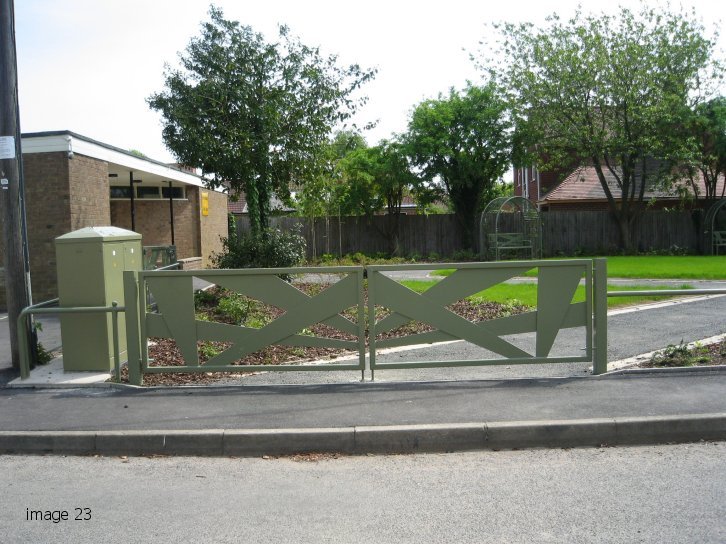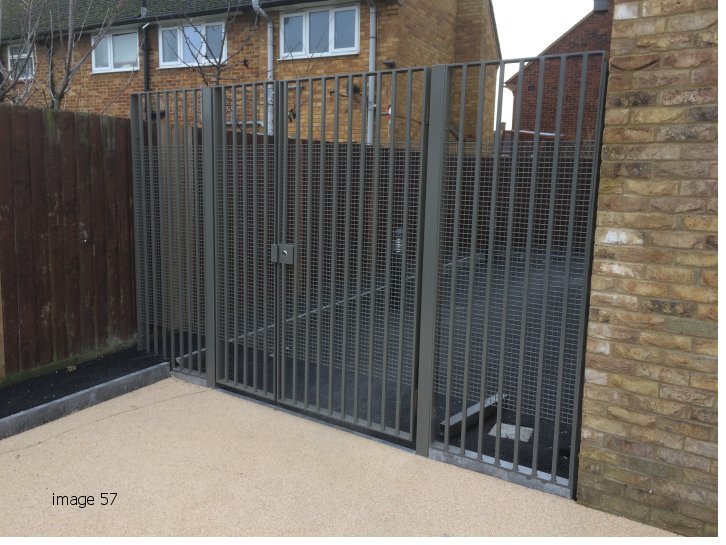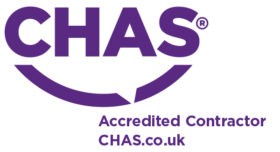When installing metal gates within metal railings, the initial considerations include the type and style of gate you would like, who and what will require access, and what type of locking mechanism to you require.
Access
Usually an access gate will be used by pedestrians, vehicles or animals. The main consideration when installing metal gates within metal railings is therefore the width of the access gate. If both people and vehicles will be using the entrance, you’ll need to consider whether to install a separate single leaf access gate. This can be installed as a totally separate gate and installed well away from the vehicular access area, or alternatively, the pedestrian access gate can be an integral part of the gate. By installing a double leaf gate or an asymmetrical gate (where smaller and larger gate combine) the access gap can be made wide enough to open out to allow either pedestrians or vehicles to pass through.

A standard gate width of between 900mm and 1200mm is considered suitable for pedestrian access. Though when installing metal gates within metal railings it should be considered whether large items such as furniture or refuse bins will need to be transported through them at any time.
Vehicle access gates normally start at the width of a typical parking bay in a car park which is normally 2.4m wide. However this can be made wider if larger heavy goods vehicles are likely to need access.

The final consideration is what obstructions exist to prevent the gate opening how you wish. Particularly if you intend to install a sliding gate or a wider gate.

Locking mechanism and operation
Entrance gates will be opened manually or using an electronically controlled opening mechanism. Electronic controls will allow access by using a key fob and pad or by installing automatic sensors that open the gate when vehicles approach. Often, the best approach when installing automatics gates is to use a key pad for entry, and sensors to allow exit.
If a manual gate is installed, the locking mechanism can be as simple sliding latch, or a lifting catch called a suffolk lock. One of the most popular locking mechanisms is a Locinox lock which offers the options to secure the gate using a key, a numbered keypad or a numbered combination lock.

Location of gate mounting posts
Another very vital consideration is to assess where the upright mounting posts will be positioned and what they will be fixed to. Wherever possible attaching the mounting post to a building, particularly if it is a housing development, should be avoided because when the gate is opened and closed the vibration caused when the gate bangs against metal will reverberate through the wall the mounting post is fixed against.
When a gate is to be installed close to a building wall, depending on the space available to root the post, we recommend that a mounting post is rooted at least 12 inches away from the wall and an oversail panel installed to bridge the gap.
This should also be considered when metal railings are being installed along the boundary of a building as the building foundations may also interfere with the depth to which mounting posts can be rooted.
If you would like further help or advice when installing metal gates within metal railings, please fill out a contact form or call our technical sales team on 01623 750214. Please also visit our technical drawing section.









